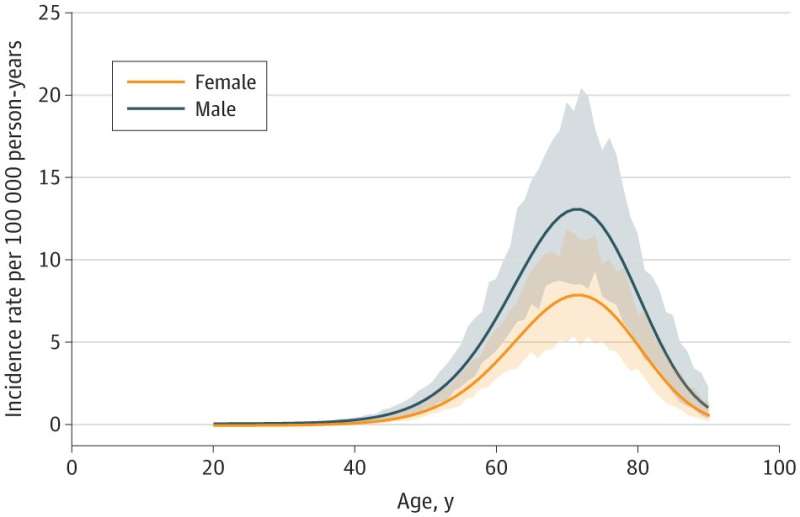This article has been reviewed according to Science X's editorial process and policies. Editors have highlighted the following attributes while ensuring the content's credibility:
fact-checked
peer-reviewed publication
trusted source
proofread
Incidence of syndromes associated with frontotemporal lobar degeneration in nine European countries

JAMA Neurology has published the results of the first international population-based study on epidemiology of Frontotemporal Dementia (FTD) involving nine European countries and thirteen neurological research centers, each of whom have recognized expertise in the FTD field. Researchers from the University of Eastern Finland took part in the study conducted by the FRONTIERS consortium (FRONTotemporal dementia Incidence European Research Study).
While the annual incidence rate of FTD in Europe was 2.4 cases per 100,000 person-years, in Northern Savo in Finland it was approximately 7 cases per 100,000 person-years—more than twice the European average.
FTD is a rare neurodegenerative disease characterized by progressive atrophy of frontal and temporal lobes, determining a broad spectrum of heterogeneous clinical conditions, characterized by social and executive dysfunctions, personality changes, impairment of language, and deficits of motor functions.
FTD is inherited in nearly 30% of patients and several clinical variants have been identified, such as behavioral variant FTD (bvFTD), Primary Progressive Aphasias (PPAs), Corticobasal Syndrome, Progressive Supranuclear Palsy and FTD associated with motor neuron disease.
Thanks to the study carried out by FRONTIERS, today we know more about the frequency and the clinical features of the disease.
The publication in JAMA Neurology is a retrospective population-based study. All the new cases with FTD diagnosed between June 1st, 2018 and May 31st, 2019 were considered, with an overall survey population of about 11 million people.
The analysis of clinical and biological data on 267 cases revealed an annual incidence rate of FTD in Europe of 2.4 cases per 100,000 person-years, with a peak of 14 cases per 100,000 around 71 years of age. The incidence was higher among men, 2.8 cases per 100,000 person-years, than among women, 1.9 cases per 100,000 person-years. The frequency of the different clinical phenotypes was also described.
Contrary to previous knowledge, this study clearly shows that the disease can strike in advanced stage of life in a considerable percentage of cases—about 30%—and not only in the presenile period. This result will allow researchers, but also health policy makers, to develop appropriate strategies to deal with FTD. Based on the results of this study, it is possible to estimate that the number of new cases of FTD per year in Europe will be around 12,000 cases. This is the first study to estimate the possible burden due to FTD in Europe.
More information: Giancarlo Logroscino et al, Incidence of Syndromes Associated With Frontotemporal Lobar Degeneration in 9 European Countries, JAMA Neurology (2023). DOI: 10.1001/jamaneurol.2022.5128



















